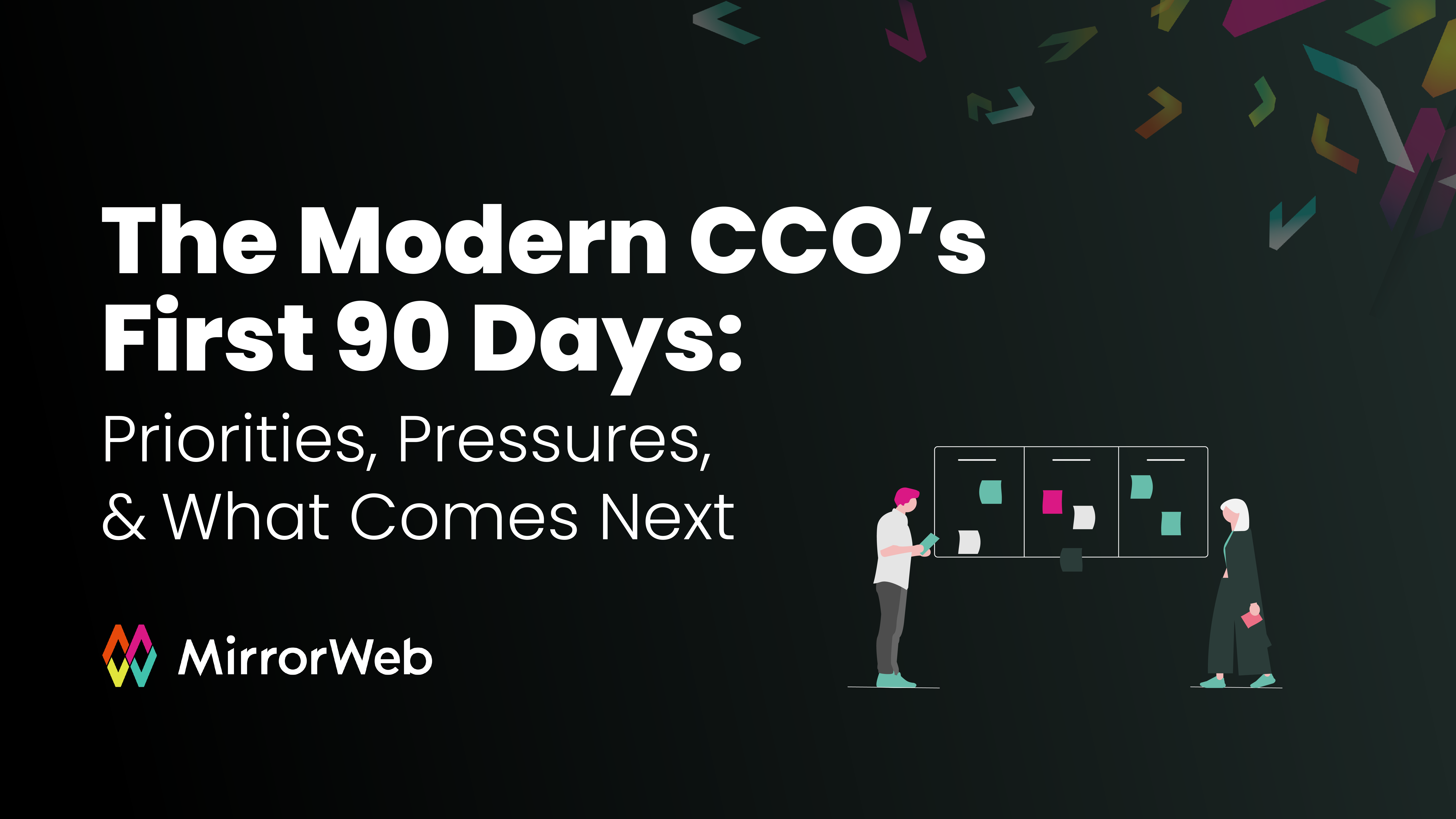Table of Contents
The role of the Chief Compliance Officer has never been more complex, or more critical. In today’s volatile regulatory environment, incoming CCOs are stepping into high-pressure situations with growing expectations, limited resources, and expanding digital footprints to supervise. The first 90 days often set the tone for long-term success - or sustained struggle.
To better understand what matters most during this transition, we spoke with seasoned compliance leaders navigating the realities of financial services today. What emerged was a clear set of shared challenges, and a growing appetite for smarter, more integrated approaches to compliance oversight.
-
Establishing Oversight in an Expanding Digital Landscape
One of the most immediate challenges new CCOs face is gaining visibility over communications and conduct across a sprawl of digital channels. From iMessage to WhatsApp, Slack to email, teams are working across dozens of platforms - and many of these tools are designed for speed, not compliance.
The regulatory expectation is clear: firms must retain, supervise, and produce digital communications across all platforms used for business. That includes ephemeral or disappearing messaging, which has become a growing blind spot for many organizations. Leaders must ensure no channel is left behind, and that their approach to capture and oversight can evolve as employee behavior does.
-
Cutting Through the Noise with Intelligent Supervision
Volume is another key pressure point. For compliance teams already under strain, the burden of manually reviewing thousands of low-risk alerts can lead to fatigue and missed red flags. Every CCO has lived through the “needle in a haystack” problem. You run a review queue that flags thousands of emails for phrases like “let’s talk offline” or “guaranteed returns”, and 99.9% of them are junk. After a while, your team stops trusting the alerts. That’s when mistakes happen.
The shift now isn’t just about more automation. It’s about relevance. Who said it? To whom? On what channel? Was this part of a pattern or a one-off? The tools that win aren’t the ones that flag more, they’re the ones that explain why it matters.
-
Rebuilding Trust and Culture from the Start
Beyond systems and processes is the more human element. Incoming CCOs are also cultural leaders, and many step into roles where prior lapses in oversight, enforcement, or clarity have damaged trust across teams. Compliance can still carry the perception of being the "department of no" - a blocker rather than a business enabler.
But things are changing. Today’s most effective compliance leaders are those who build trust by showing empathy, transparency, and consistency. That means engaging early with front-office leaders, establishing clear reporting lines, and driving home the idea that compliance isn’t about punishment: it’s about protecting the business and enabling success.
-
Balancing Risk and Privacy in a Mobile World
With remote and hybrid work now the norm, personal devices are part of the compliance picture, and that introduces new challenges. Mobile messaging apps, especially consumer-grade platforms like iMessage, are commonly used for business communications, but capturing and archiving them securely and compliantly is far from simple.
CCOs must find ways to balance regulatory capture requirements with employee privacy expectations. One common - but increasingly burdensome - solution has been to issue two phones: one for work and one for personal use. While this somewhat binary approach may seem to simplify compliance, it often comes at the cost of efficiency, and significantly increases employee frustration. A better path forward requires precision and privacy-by-design: technology that ensures only work-related communications are retained, without opening the door to over-collection or misuse of personal data.
-
Accelerating Trust
One of the most recurring themes in our conversations with CCOs was the importance of establishing strategic clarity early, without rushing critical decisions. In a new role, there’s rarely the luxury of time. Regulators expect results, boards expect risk to be under control, and teams need clear direction. You get one shot. Your first exam window hits fast and if you can’t show auditors a clean review process with real outcomes, you’re labeled a risk. Boards lose confidence. The front office gets jumpy. You can’t wait six months to get your systems in place - you’ve got maybe six weeks.
The ability to move quickly - from identifying critical gaps to implementing oversight systems and responding to issues - can make the difference between a confident, proactive compliance function, and one stuck in constant firefighting mode.
Rethinking What Compliance Can Be
While the compliance landscape may be more complex than ever, there’s a silver lining: the opportunity to lead meaningful change.
For too long, compliance has been seen as reactive, manual, and disconnected from business strategy. But modern CCOs are changing the narrative. With the right culture, tools, and mindset, compliance can be a source of clarity, trust, and momentum - especially during moments of transition.
The first 90 days are about more than triage. They’re about setting the foundations for a compliance function that doesn’t just manage risk, but drives the business forward with confidence.
Want to dive deeper into these insights?
Check out the full eBook - Beyond the Checklist: Strategic Compliance Priorities in Financial Services - to explore practical takeaways, peer advice from experienced leaders, and how top firms are transforming compliance from a burden into a business advantage.


